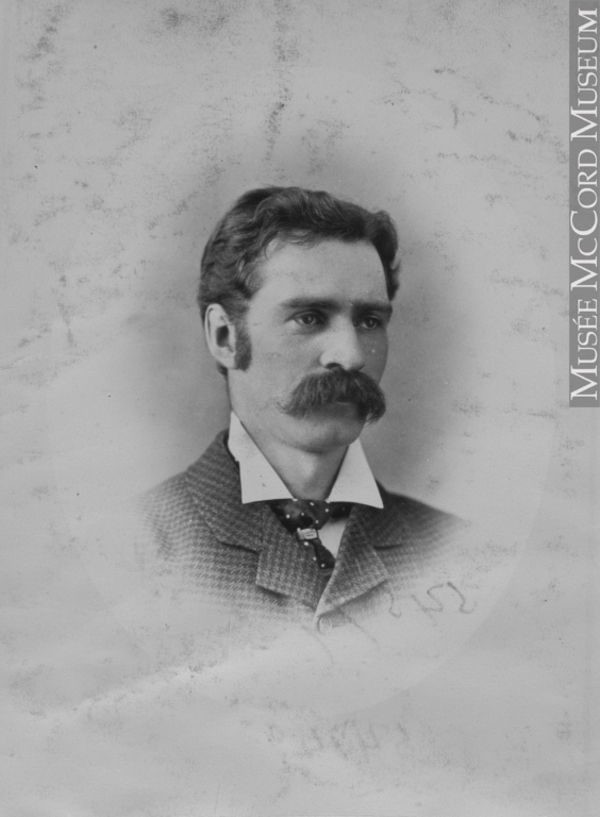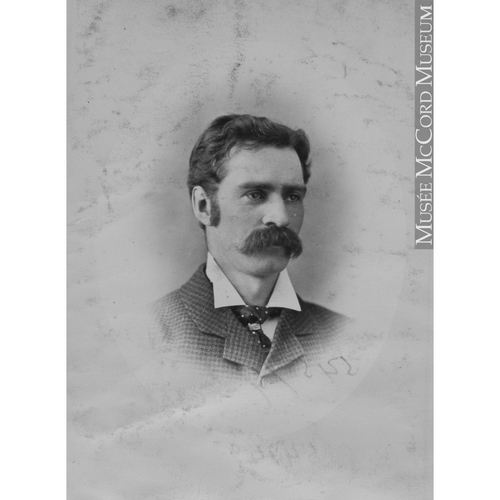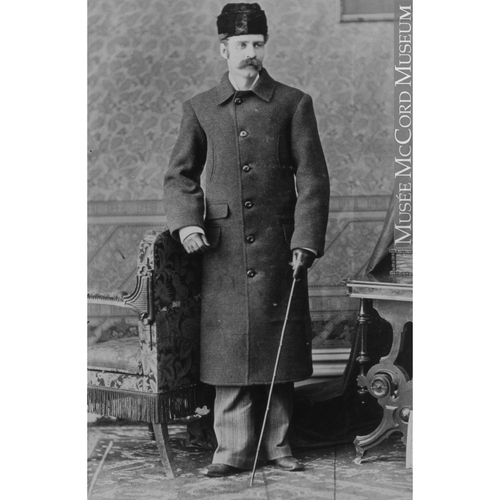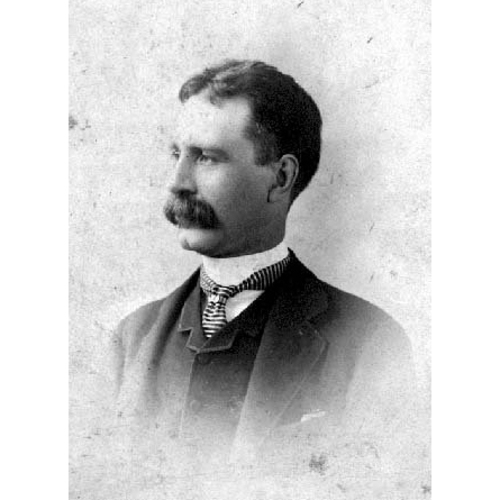
Source: Link
ONDERDONK, ANDREW, engineer and contractor; b. 30 Aug. 1848 in New York City, son of John Remsen Onderdonk and Sarah Trask; m. 1871 Sarah Delia Hilman of Plainfield, N.J., and two sons and two daughters survived him; d. 21 June 1905 in Oscawana, N.Y.
Andrew Onderdonk, an American of Dutch and English descent, entered the Rensselaer Polytechnic Institute at Troy, N.Y., in 1864–65 to study mathematics and engineering but apparently left after one or two semesters. He was hired by the Central Railroad of New Jersey and then took part in surveys of roads and town-sites in New York State for businessman Darius Ogden Mills. He subsequently worked on improvements to the San Francisco harbour.
Onderdonk became prominent in western Canada when he supervised construction of major sections of the transcontinental railway in British Columbia. Beginning in 1879, he won or took over Canadian government contracts for the building of the line between Port Moody and Savona’s Ferry (Savona) on Kamloops Lake. He was manager of this immense project and was backed by an American syndicate which included Mills and Levi Parsons Morton. The 212-mile section, mainly through the canyons of the Fraser and Thompson rivers, represented some of the most difficult construction on the entire line. Later, he received the contract from the Canadian Pacific Railway Company itself to build the section between Savona’s Ferry and Craigellachie, in Eagle Pass, the site of the last-spike ceremony. In total, he supervised work on 338 miles of main line in British Columbia.
Faced with chronic labour shortages and enormous construction difficulties, Onderdonk did what had been done on railways built in the western United States. He subcontracted through Chinese labour-suppliers to bring in men from China. His workforce included about 2,500 whites and 6,500 Chinese, although over the term of the contracts many more were employed. The use of low-priced Asian labour was resented in Canada. Moreover, the living conditions of the workers, particularly during the winter months, were terrible. Onderdonk depended upon the Chinese labourers but took little, if any, responsibility for them and dealt through the labour contractors.
The construction of the railway through the canyons was an engineering achievement. Tunnels, bridges, and extensive retaining walls were needed all along the route. A major bridge was required to cross the Fraser at Cisco. This striking structure, designed by Charles Conrad Schneider, was a landmark in engineering. Of a cast-iron and steel cantilever type, it was one of the earliest of the kind to be erected. Onderdonk’s base of operations was at Yale, the head of navigation on the lower Fraser, and he lived there with his family during most of the construction period. Still only in his mid thirties, he ran the project, which had great technical, staffing, and logistical difficulties, very capably. The contracts were completed by the opening of the CPR in November 1885.
Onderdonk had been under considerable pressure from the government to reduce costs, and some sections through the canyons were lightly built with excessive curvature. In addition, because the line had been under construction from 1880 to 1885, many bridges and other structures were probably nearly halfway through their expected life spans by the time the railway was opened. After the CPR took over the entire route, there was much dispute with the government over the quality of construction and the costs of improving the line. Substantial bridge and masonry work was required throughout British Columbia during the 1890s on all sections of the CPR, and a settlement was reached in the company’s favour in 1891 [see Britton Bath Osler].
Like most major contractors, Onderdonk was highly mobile. In 1886 he built a railway in South America and the following year he won a contract to build a four-mile tunnel under Lake Michigan as part of the Chicago water-supply system. He next worked in Canada on the Trent Canal in 1895 and the Toronto, Hamilton and Buffalo Railway tunnel in Hamilton. Later he constructed the Northwestern Elevated Railroad in Chicago, half of the new Victoria Bridge at Montreal, and four sections of the Soulanges Canal. His last important works were the dredging of the Ambrose Channel, which was to provide a new 40-foot-deep entrance to New York’s harbour, and the building of a subway tunnel under the East River for the New York Rapid Transit Railway. At the time of his death from heart failure, attributed to overwork, he was general manager of the New York Tunnel Company, which he had formed to carry out the latter project, described in an obituary notice as “one of the most difficult pieces of work ever undertaken by a contractor.”
Onderdonk’s record suggests a man of considerable engineering and managerial ability. He was described at his death as “one of the best known of American contractors.” Although his name is unfamiliar in Canada because generally he stayed in the country only during the course of the projects he was building, his works here were substantial. He made a significant contribution to the completion of the CPR and to several important undertakings in Ontario and Quebec. A member of the Metropolitan Club in New York City and the Ardsley Country Club at Ardsley, N.Y., he maintained social and business connections in Canada through membership in the Rideau Club in Ottawa.
Rensselaer Polytechnic Institute Arch. (Troy, N.Y.), Student records. Montreal Daily Star, 22 June 1905: 12. New York Times, 22 June 1905: 9. Engineering News (New York), 53 (1905): 681. Ann Hanley, “Andrew Onderdonk, master builder,” Pacific Northwest Quarterly (Seattle, Wash.), 49 (1958): 146–49. H. A. Innis, A history of the Canadian Pacific Railway (Toronto, 1923; repr. Toronto and Buffalo, N.Y., 1971), notes, 89, 91–92. Harold Kalman and Douglas Richardson, “Building for transportation in the nineteenth century,” Journal of Canadian Art Hist. (Montreal), 3 (1976–77): 21–43. W. K. Lamb, History of the Canadian Pacific Railway (New York and London, 1977). O [-S.-A.] Lavallée, Van Horne’s road: an illustrated account of the construction and first years of the operation of the Canadian Pacific transcontinental railway (Montreal, 1974). P. E. Roy, “A choice between evils: the Chinese and the construction of the Canadian Pacific Railway in British Columbia,” The CPR west: the iron road and the making of a nation, ed. H. A. Dempsey (Vancouver and Toronto, 1984), 13–34. R. D. Turner, West of the Great Divide: an illustrated history of the Canadian Pacific Railway in British Columbia, 1880–1986 (Victoria, 1987).
Cite This Article
Robert D. Turner, “ONDERDONK, ANDREW,” in Dictionary of Canadian Biography, vol. 13, University of Toronto/Université Laval, 2003–, accessed March 28, 2025, https://www.biographi.ca/en/bio/onderdonk_andrew_13E.html.
The citation above shows the format for footnotes and endnotes according to the Chicago manual of style (16th edition). Information to be used in other citation formats:
| Permalink: | https://www.biographi.ca/en/bio/onderdonk_andrew_13E.html |
| Author of Article: | Robert D. Turner |
| Title of Article: | ONDERDONK, ANDREW |
| Publication Name: | Dictionary of Canadian Biography, vol. 13 |
| Publisher: | University of Toronto/Université Laval |
| Year of revision: | 1994 |
| Access Date: | March 28, 2025 |





